人人都撒谎(英文原版) - 副本
Title Page
Foreword
Dedication
Contents
Introduction: The Outlines of a Revolution
PART I: DATA, BIG AND SMALL
1. Your Faulty Gut
PART II: THE POWERS OF BIG DATA
2. Was Freud Right?
3. Data Reimagined
Bodies as Data
Words as Data
Pictures as Data
4. Digital Truth Serum
The Truth About Sex
The Truth About Hate and Prejudice
The Truth About the Internet
The Truth About Child Abuse and Abortion
The Truth About Your Facebook Friends
The Truth About Your Customers
Can We Handle the Truth?
5. Zooming In
What’s Really Going On in Our Counties, Cities, and Towns?
How We Fill Our Minutes and Hours
Our Doppelgangers
Data Stories
6. All the World’s a Lab
The ABCs of A/B Testing
Nature’s Cruel—but Enlightening—Experiments
PART III: BIG DATA: HANDLE WITH CARE
7. Big Data, Big Schmata? What It Cannot Do
The Curse of Dimensionality
The Overemphasis on What Is Measurable
8. Mo Data, Mo Problems? What We Shouldn’t Do
The Danger of Empowered Corporations
The Danger of Empowered Governments
Conclusion: How Many People Finish Books?
Acknowledgments
Notes
Index
About the Author
Copyright
About the Publisher
人人都撒谎(英文原版)
Title Page
Foreword
Dedication
Contents
Introduction: The Outlines of a Revolution
PART I: DATA, BIG AND SMALL
1. Your Faulty Gut
PART II: THE POWERS OF BIG DATA
2. Was Freud Right?
3. Data Reimagined
Bodies as Data
Words as Data
Pictures as Data
4. Digital Truth Serum
The Truth About Sex
The Truth About Hate and Prejudice
The Truth About the Internet
The Truth About Child Abuse and Abortion
The Truth About Your Facebook Friends
The Truth About Your Customers
Can We Handle the Truth?
5. Zooming In
What’s Really Going On in Our Counties, Cities, and Towns?
How We Fill Our Minutes and Hours
Our Doppelgangers
Data Stories
6. All the World’s a Lab
The ABCs of A/B Testing
Nature’s Cruel—but Enlightening—Experiments
PART III: BIG DATA: HANDLE WITH CARE
7. Big Data, Big Schmata? What It Cannot Do
The Curse of Dimensionality
The Overemphasis on What Is Measurable
8. Mo Data, Mo Problems? What We Shouldn’t Do
The Danger of Empowered Corporations
The Danger of Empowered Governments
Conclusion: How Many People Finish Books?
Acknowledgments
Notes
Index
About the Author
Copyright
About the Publisher
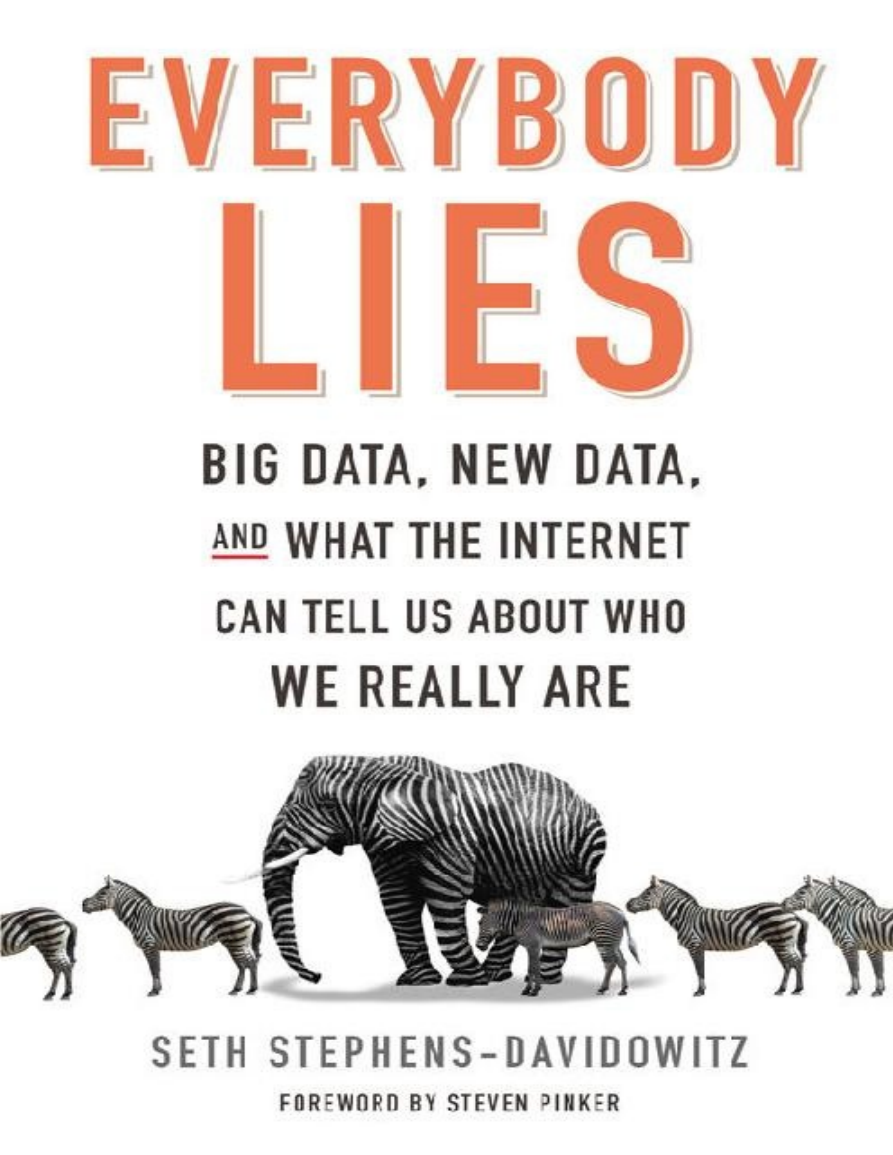

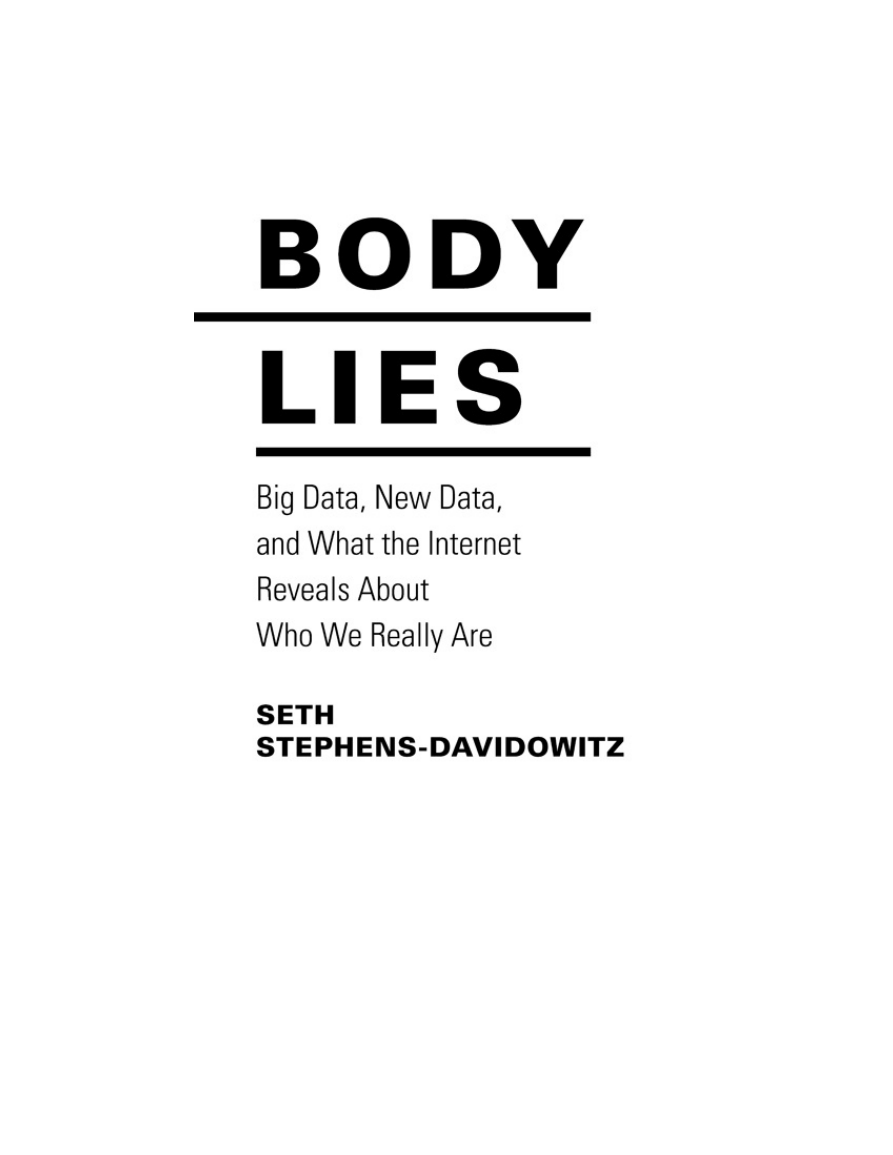

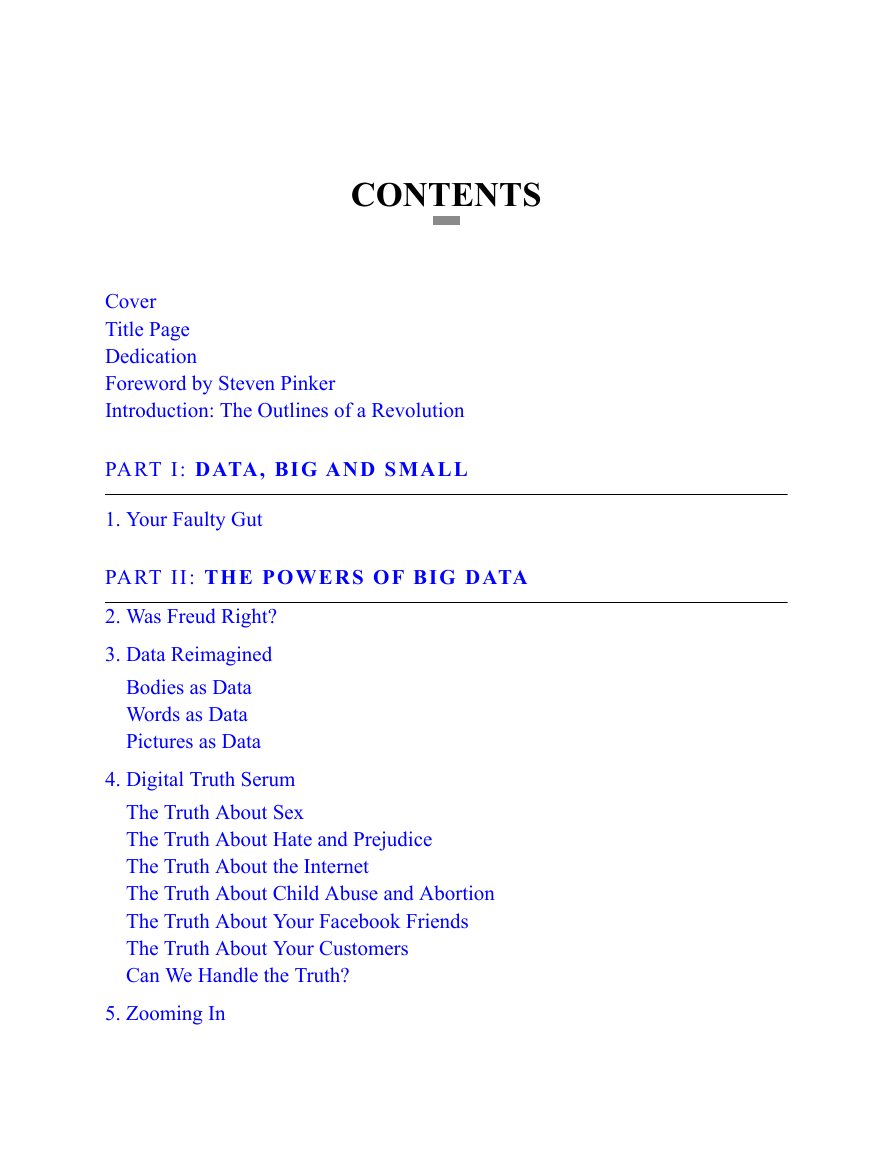

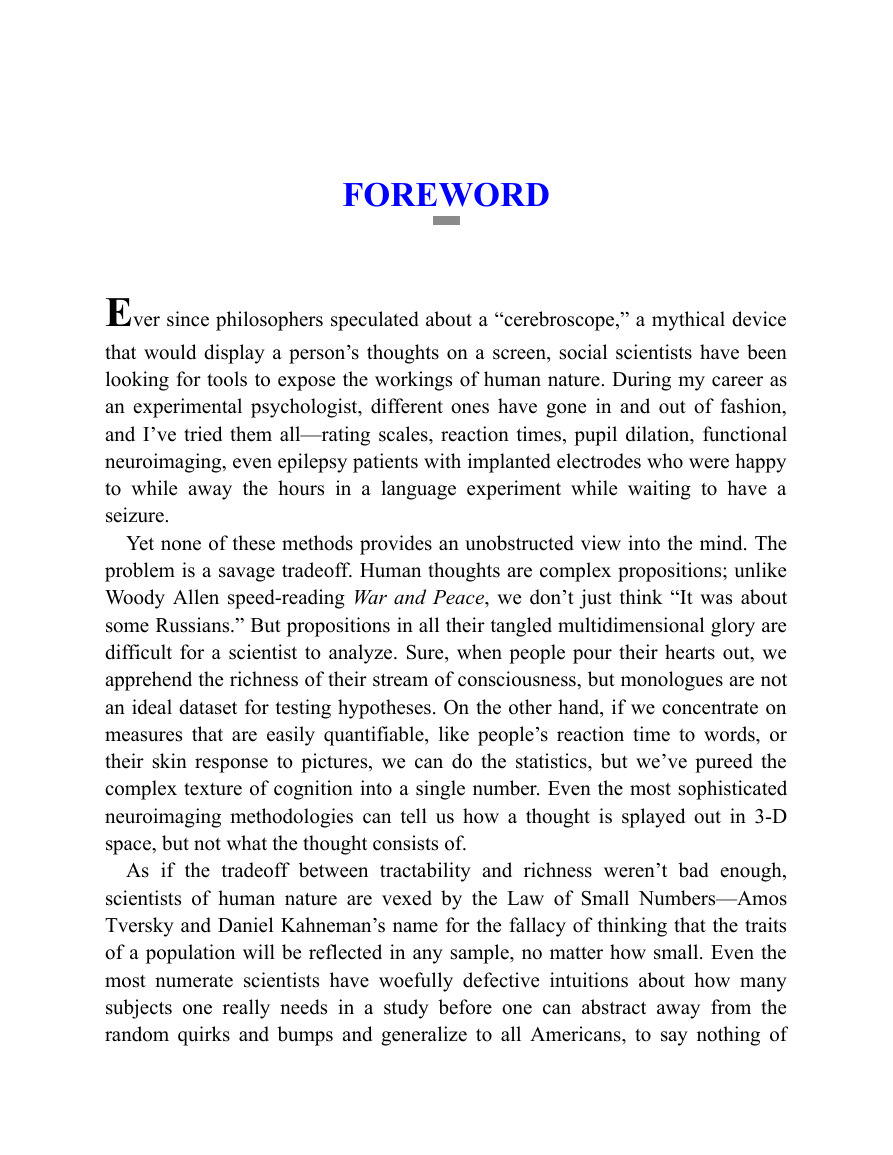
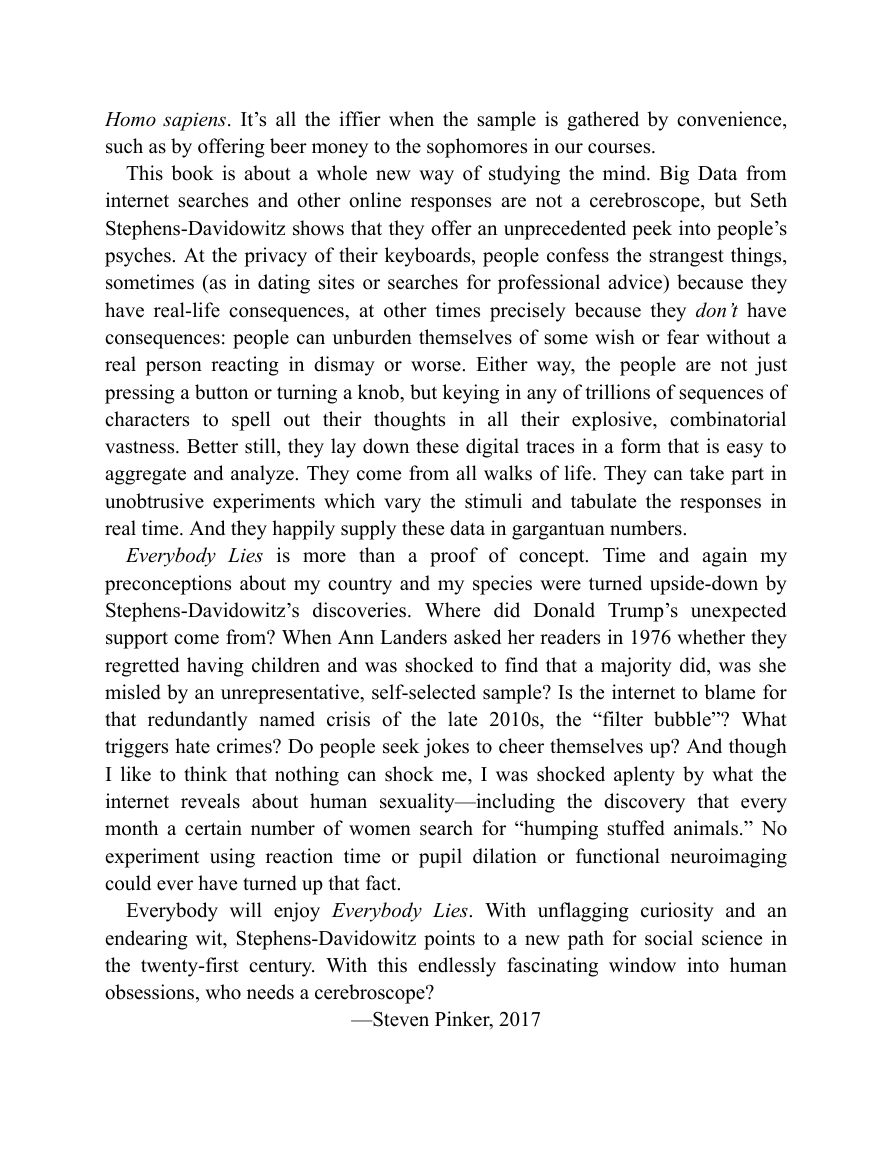








 2023年江西萍乡中考道德与法治真题及答案.doc
2023年江西萍乡中考道德与法治真题及答案.doc 2012年重庆南川中考生物真题及答案.doc
2012年重庆南川中考生物真题及答案.doc 2013年江西师范大学地理学综合及文艺理论基础考研真题.doc
2013年江西师范大学地理学综合及文艺理论基础考研真题.doc 2020年四川甘孜小升初语文真题及答案I卷.doc
2020年四川甘孜小升初语文真题及答案I卷.doc 2020年注册岩土工程师专业基础考试真题及答案.doc
2020年注册岩土工程师专业基础考试真题及答案.doc 2023-2024学年福建省厦门市九年级上学期数学月考试题及答案.doc
2023-2024学年福建省厦门市九年级上学期数学月考试题及答案.doc 2021-2022学年辽宁省沈阳市大东区九年级上学期语文期末试题及答案.doc
2021-2022学年辽宁省沈阳市大东区九年级上学期语文期末试题及答案.doc 2022-2023学年北京东城区初三第一学期物理期末试卷及答案.doc
2022-2023学年北京东城区初三第一学期物理期末试卷及答案.doc 2018上半年江西教师资格初中地理学科知识与教学能力真题及答案.doc
2018上半年江西教师资格初中地理学科知识与教学能力真题及答案.doc 2012年河北国家公务员申论考试真题及答案-省级.doc
2012年河北国家公务员申论考试真题及答案-省级.doc 2020-2021学年江苏省扬州市江都区邵樊片九年级上学期数学第一次质量检测试题及答案.doc
2020-2021学年江苏省扬州市江都区邵樊片九年级上学期数学第一次质量检测试题及答案.doc 2022下半年黑龙江教师资格证中学综合素质真题及答案.doc
2022下半年黑龙江教师资格证中学综合素质真题及答案.doc